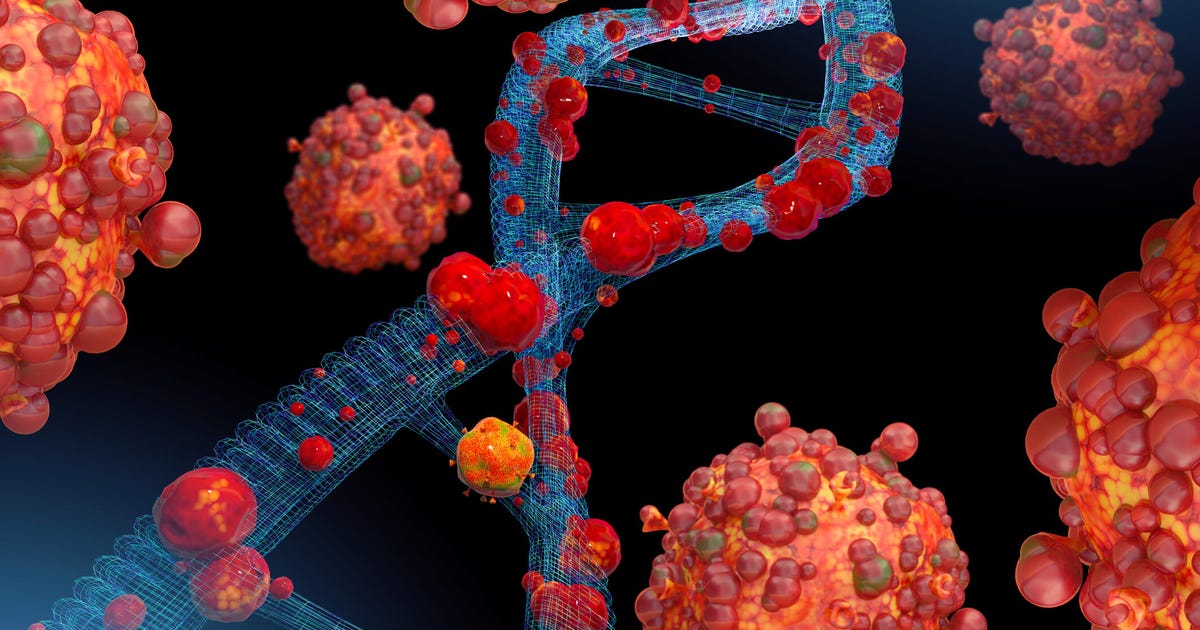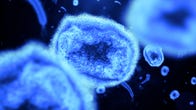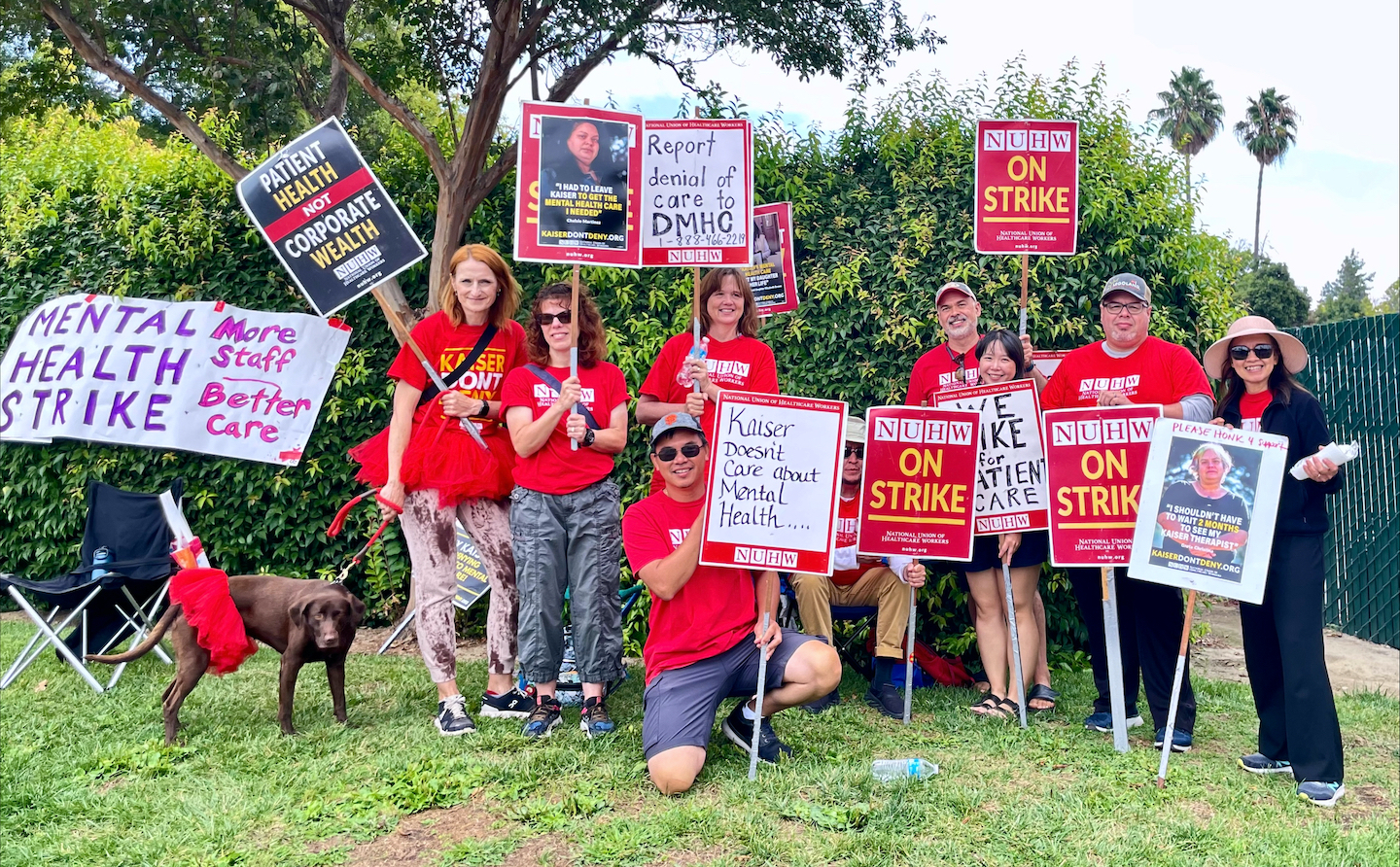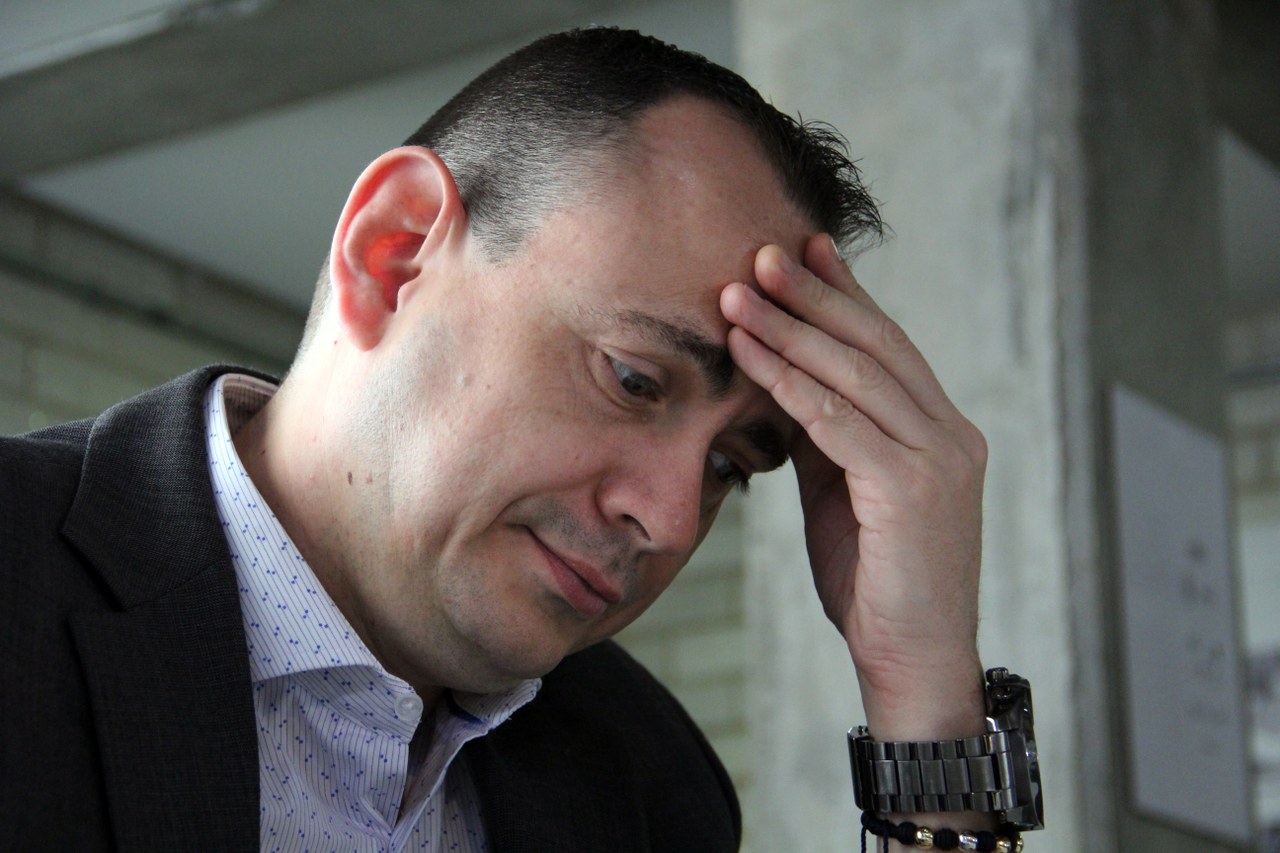[ad_1]
What’s happening
The monkeypox outbreak is still growing in the US and other countries. The WHO has declared a public health emergency in response.
Why it matters
Controlling monkeypox is important for public health. Some people with monkeypox may have only a small rash or blemishes mistaken for something else.
What it means for you
Anyone can get monkeypox, but gay and bisexual men are being disproportionately affected in the current outbreak. If you have an unexplained rash or skin blemish or think you may have been exposed, seek medical care.
The World Health Organization on Saturday declared the monkeypox outbreak a public health emergency of international concern. This is meant to open up more resources and information-sharing between countries to slow the spread of a disease that’s resulted in more than 16,000 cases across dozens of countries that don’t normally have the disease.
“We have an outbreak that has spread around the world rapidly, through new modes of transmission, about which we understand too little, and which meets the criteria in the International Health Regulations,” WHO Director General Dr. Tedros Adhanom Ghebreyesus said in a statement.
“For all of these reasons, I have decided that the global monkeypox outbreak represents a public health emergency of international concern,” Tedros said.
The WHO currently has only two other public health emergencies declared, The New York Times reports: COVID-19 and polio, which was confirmed in the US this week for the first time since 2013.
There have been about 2,900 cases of the monkeypox in the US, according to Friday’s data from the US Centers for Disease Control and Prevention. Some officials say that the monkeypox outbreak is becoming harder to control, and the confirmed number of cases is likely much smaller than the true number of cases. Limited testing resources and confusion among health care providers over how the disease presents has led to a back-and-forth between health officials, with most agreeing more monkeypox tests, vaccines and awareness are needing to slow the outbreak.
“This should end,” Dr. Eric Cioe-Pena, director of global health for Northwell Health, told Healthline. “If it becomes endemic, it’s a failure of public health.”
Monkeypox is a disease caused by an orthopoxvirus that belongs to the same family as the viruses that cause smallpox and cowpox. Monkeypox is endemic in West and Central Africa. Reports of it in the US have been rare but not unheard of. (There were two reported cases in 2021 and 47 cases in 2003 during an outbreak linked to pet prairie dogs.)
In a health alert to medical providers in mid-June on the spread of monkeypox in the US, the US Centers for Disease Control and Prevention warned that some cases of monkeypox might be getting missed in testing, and that the monkeypox rash could be mistaken for (or come in addition to) other common infections, like herpes.
CDC Director Dr. Rochelle Walensky had previously said that current monkeypox infections were causing people to develop blemishes that more closely resembled a pimple or blister as opposed to a more classic, spreading rash, as reported by NBC. Though no deaths from the outbreak have been reported in the US, it’s important for individuals and their health care providers to catch symptoms early to contain the outbreak of monkeypox occurring in many countries.
Anyone with close contact to an infection can get monkeypox, but most cases in the current outbreak are being reported in gay and bisexual men. Tedros said Saturday that more information and services should be directed to the communities bearing the brunt of the outbreak in ways that “protect the health, human rights and dignity of affected communities.”
“Stigma and discrimination can be as dangerous as any virus,” he noted.
Here’s what to know.
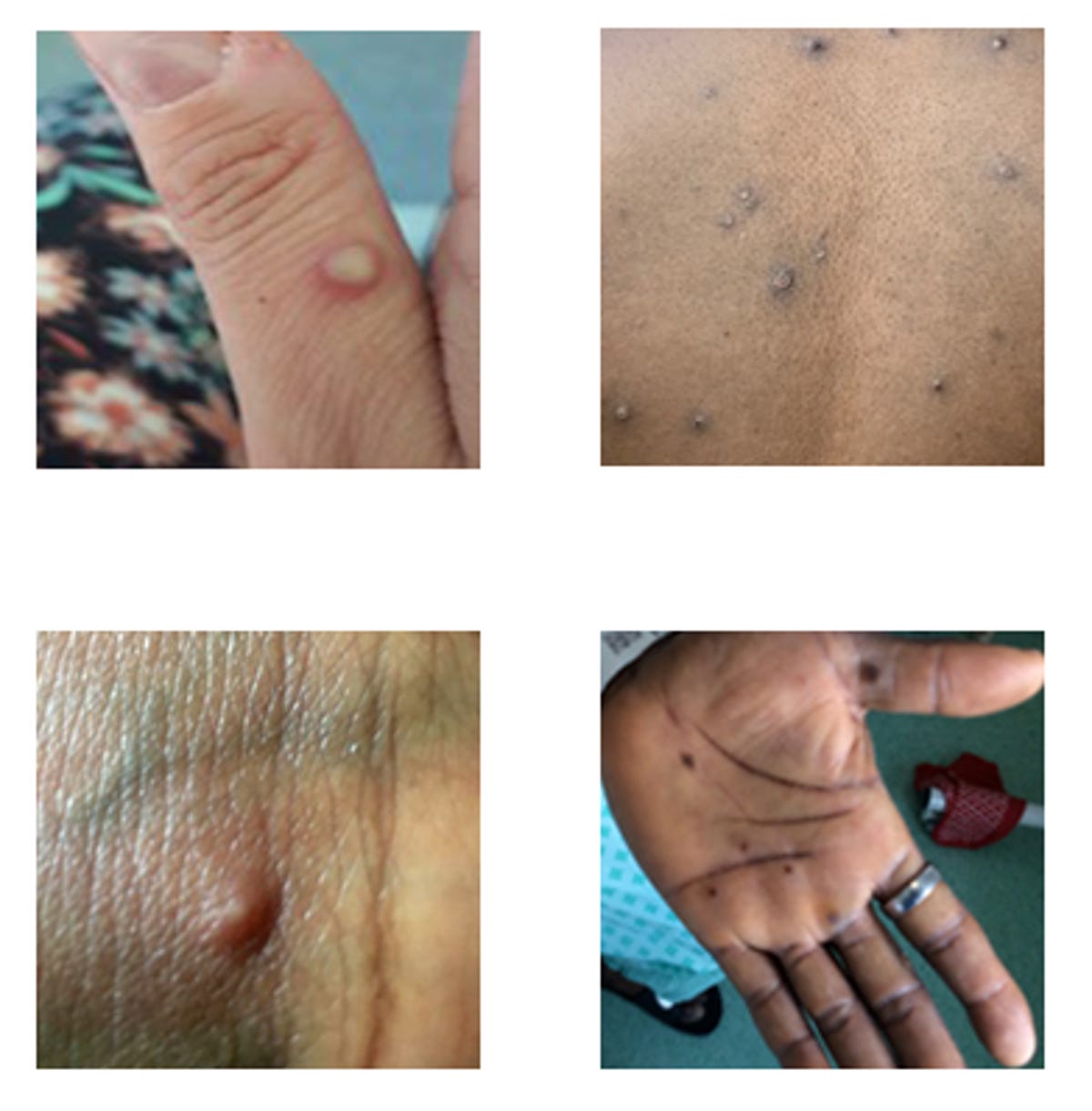
Examples of monkeypox “pox” or rashes.
NHS England High Consequence Infectious Diseases Network
What is monkeypox? How severe is it?
Monkeypox is a zoonotic disease, which means it’s transmitted from animals to humans. It’s caused by an orthopoxvirus of the same family as the one that causes smallpox, though smallpox is considered more clinically severe than monkeypox.
There are two clades or types of monkeypox virus, according to the WHO: the West African clade and the Congo Basin clade. The West African strain, which has been identified in the recent cases, according to a May 26 presentation by the WHO, has a fatality rate of less than 1%. The Congo Basin or Central African clade has a higher mortality rate of up to 10%, per the WHO.
Monkeypox has caused 72 deaths this year in countries where it’s endemic, according to the WHO, but no deaths have been reported in the current outbreak in countries where it isn’t endemic, including the US.
Monkeypox was first discovered in the 1950s in colonies of monkeys that were being researched, according to the CDC, but it’s also been found in squirrels, rats and other animals. The first human case was discovered in 1970.
How do you catch monkeypox? Does it compare to COVID?
Monkeypox spreads between people primarily through contact with infectious sores, scabs or bodily fluids, according to the CDC, but it can also spread through prolonged face-to-face contact via respiratory droplets or by touching contaminated clothing or bedding. (Think the close contact you’d have with a sexual partner, the contact you have with strangers at a busy event or club, as well the close contact you have with a household member, who you hug, kiss or share furniture with.) Experts are currently investigating whether monkeypox can be spread through semen or vaginal fluid.
Anyone can be infected with monkeypox, but many of the cases in the US recently have been in men who have sex with men, the CDC says. At least two cases have been detected in children, Walensky told the Washington Post, adding that both are doing well. The investigation into the children’s cases is ongoing, but they’re likely linked to household transmission, the Post reports.
Gay and bisexual communities tend to have particularly “high awareness and rapid health-seeking behavior when it comes to their and their communities’ sexual health,” Dr. Hans Henri P. Kluge, the WHO’s regional director for Europe, said in a statement at the end of May, noting that those who sought early health care services should be applauded.
The “close” in close contact is a key element in the transmission of monkeypox. That, along with the fact that the virus that causes monkeypox appears to have a slower reproduction rate than the COVID-19 virus, sets it apart from the ongoing COVID-19 pandemic, Dr. Tom Inglesby, director of the Center for Health Security at the Johns Hopkins Bloomberg School of Public Health, said in June at a media briefing.
“It’s not acting like influenza or COVID or chicken pox or measles — things that spread quickly in an unvaccinated community,” Inglesby said. “It’s acting much more like a disease that requires close contact.”
Dr. Jennifer McQuiston, deputy director of the CDC’s Division of High Consequence Pathogens and Pathology, also suggested that monkeypox behaves differently than COVID. “It’s not a situation where if you’re passing someone at a grocery store, they’re gonna be at risk for monkeypox,” she said at a May briefing with the CDC.
Scientists are still learning about monkeypox in the newer outbreaks, however, and some experts are pushing back against the idea that it isn’t airborne.
Because many of the recent cases of monkeypox in Europe have resulted in lesions in the genital region and resemble symptoms of sexually transmitted infections like herpes, you should ask to be evaluated if you have an unexplained rash in your genital region, Dr. John Brooks, epidemiologist in the CDC’s division of HIV/AIDS prevention, said at a May CDC media briefing.
What are the symptoms of monkeypox?
Symptoms of monkeypox in humans are similar to (but milder than) smallpox, which WHO declared eliminated in 1980.
A monkeypox infection typically begins with flulike symptoms, including fatigue, intense headache, fever and swollen lymph nodes. Within one to three days of a fever developing, according to the CDC, a rash or sores develop and can be located pretty much anywhere on the body, including the hands, genitals, face, chest and inside of the mouth.
But wherever they develop, the rash or monkeypox lesions can be flat or raised, full of clear or yellowish fluid and will eventually dry up and fall off.
You can spread monkeypox until the sores heal and a new layer of skin forms, according to the CDC. Illness typically lasts for two to four weeks. The incubation period ranges from five to 21 days, according to the CDC.
Notably, some people never experience flulike symptoms, the CDC says, and you may experience all or only few of the typical monkeypox symptoms. For safer sex and social gatherings where you may be in close contact with other peoples’ bodies, the CDC has a fact sheet for practices to consider.
Monkeypox doesn’t have the same ability to infect people like the virus that causes COVID-19, says Dr. Amesh Adalja, an infectious-disease expert and senior scholar at the Johns Hopkins Center for Health Security.
“Monkeypox is not contagious during the incubation period, so it doesn’t have that ability to spread the way certain viruses like flu or SARS-CoV-2 can,” he said. Experts are studying whether this will remain true in the current outbreak.
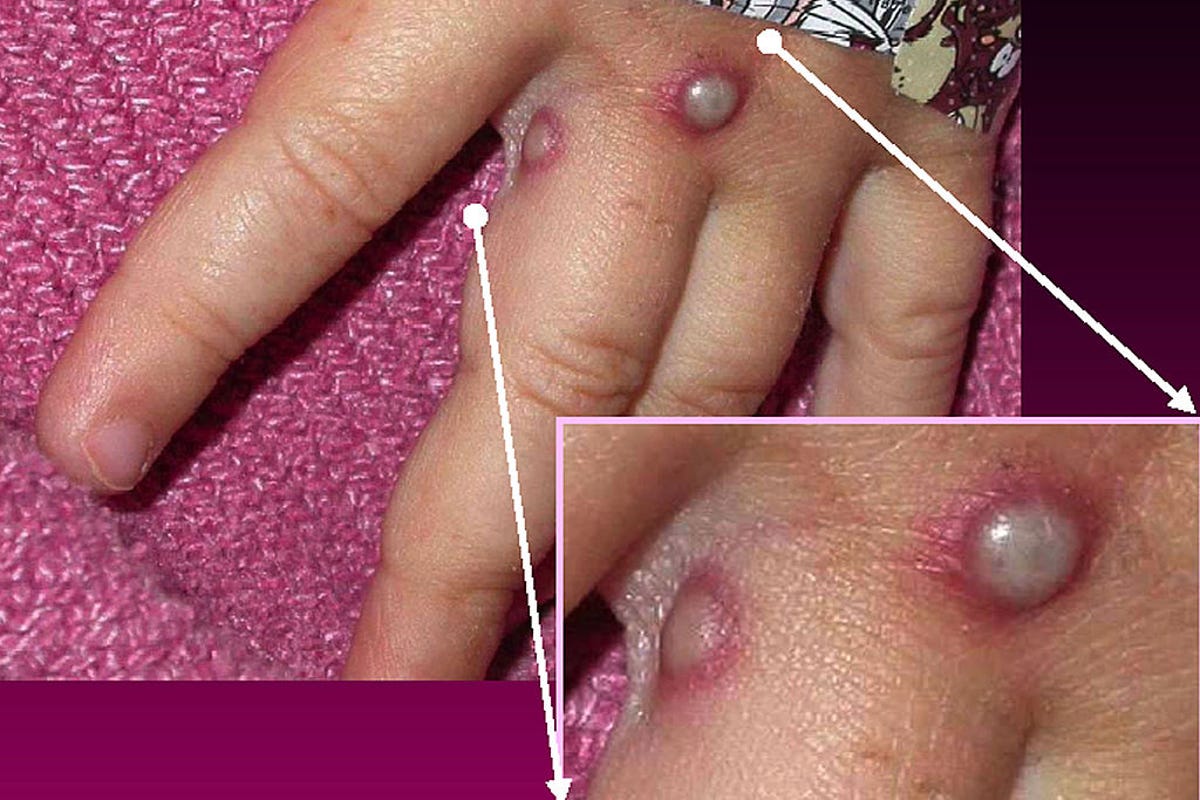
Monkeypox lesions progress through a series of stages before scabbing, according to the CDC.
While traditionally the rash starts on the face before becoming more widespread, monkeypox blemishes can be limited, resemble a pimple or other sore and aren’t always necessarily accompanied by flulike symptoms.
Getty Images/Handout
Is there a vaccine for monkeypox?
Yes. The US Food and Drug Administration has approved Jynneos to prevent smallpox and monkeypox. Because monkeypox is so closely related to smallpox, vaccines for smallpox are also effective against monkeypox. In addition to Jynneos, the US has another smallpox vaccine in its stockpile, called ACAM2000. Because ACAM2000 is an older generation of vaccine with harsher side effects, it’s not recommended for everyone, including people who are pregnant or immunocompromised.
Jynneos is what’s being shipped out to states, though states can also request ACAM2000 because supply of Jynneos — a two-dose vaccine with each dose given four weeks apart — is relatively low. Individual health departments will determine eligibility for the vaccine, but they’re meant for close contacts of someone with monkeypox or people who believe they’re at high risk for an exposure.
Vaccinating people who have been exposed to monkeypox is what Adalja calls “ring vaccination,” where health officials isolate the infected person and vaccinate their close contacts to stop the spread. Because cases may be going undetected, the US and the UK have expanded the eligibility for who can get vaccinated (to include those without a confirmed exposure).
Dr. Daniel Pastula, chief of neuroinfectious diseases and associate professor of neurology, medicine and epidemiology at the University of Colorado Anschutz Medical Campus, said the vaccine is used in people who’ve been exposed but aren’t yet showing symptoms of monkeypox, because the incubation period for the disease is so long.
“Basically what you’re doing is stimulating the immune system with the vaccine, and getting the immune system to recognize the virus before the virus has a chance to ramp up,” Pastula said.
Though health care and lab professionals who work directly with monkeypox are recommended to receive smallpox vaccines (and even boosters), the original smallpox vaccines aren’t available to the general public and haven’t been widely administered in the US since the early 1970s. Because of this, any spillover or “cross-protective” immunity from smallpox vaccines would be limited to older people, the WHO said. According to the WHO, vaccination against smallpox was shown to be about 85% effective at preventing monkeypox.
The big picture
It’s important to be aware of the symptoms of monkeypox, and to know your current individual risk level. Monkeypox spreads through close contact and doesn’t require sex.
“This shows the need for public health,” Pastula said. “As we saw with COVID, it is so important to have a robust public health system and to support our public health system.”
It also calls attention to the wide variety of viruses we live with. All zoonotic diseases (which include COVID-19) have the potential to be serious, which is why monitoring them is so important, he said.
“I think this shows that there are lots of potential zoonotic threats — these are diseases that can hop from animals to humans,” Pastula said. This exemplifies the need for public health surveillance, he said, “but it also really shows that we should be careful and deliberate in our interactions with both wild animals and domestic animals.”
It’s also a developing situation, he said, so recommendations made by public health officials will change as the information does; the same goes for all diseases and new science.
The information contained in this article is for educational and informational purposes only and is not intended as health or medical advice. Always consult a physician or other qualified health provider regarding any questions you may have about a medical condition or health objectives.
[ad_2]
Source link
